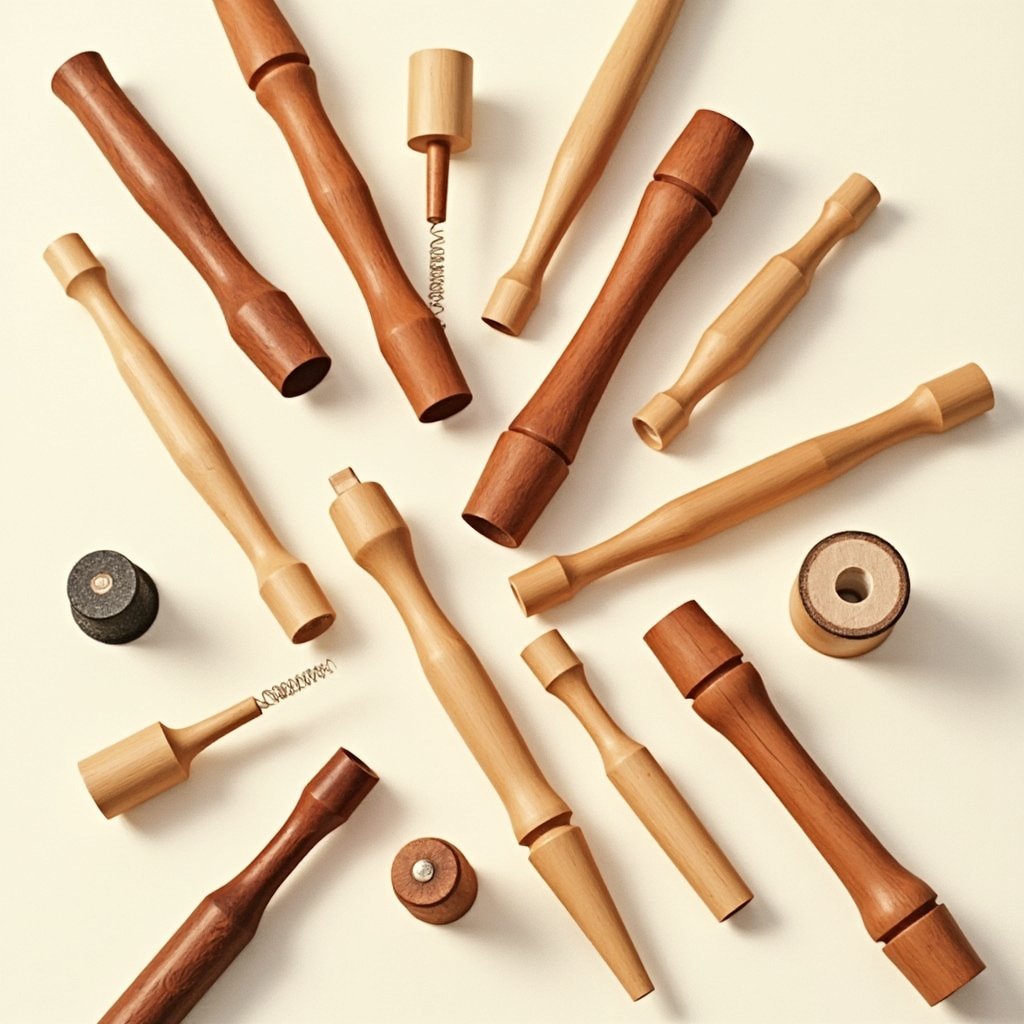Why Make Your Own Dowels?
Making your own dowels ensures consistency in size, quality, and wood species. Plus, it’s a great way to use up scrap wood. By following this method, you can create dowels that perfectly match your project’s needs.
Tools and Materials You’ll Need
- Router table
- Roundover bits (various sizes)
- Push blocks
- Scrap wood
- Drill (for sanding)
- Sandpaper
Step 1: Prepare Your Wood Blanks
Start by ripping your scrap wood into rectangular blanks. The width of the blank should match the diameter of the dowel you want to create. For example, if you need a 1-inch dowel, rip a 1-inch-wide blank.
Step 2: Choose the Right Roundover Bit
Roundover bits are measured by the radius they cut, which is half the diameter of the dowel. For a 1-inch dowel, use a ½-inch roundover bit. For a ½-inch dowel, use a ¼-inch roundover bit, and so on.
Step 3: Set Up Your Router Table
- Adjust the Bit Height: Set the roundover bit so the lower end of the cutter is flush with the top of the router table. You can test this by feeling for when the wood no longer catches on the cutter.
- Set the Fence: Position the fence flush with the top of the bit’s cutter. Using a fence instead of the guide bearing on the bit itself makes it easier to control long dowel blanks.
Step 4: Shape the Dowel
A roundover bit removes material gradually, so you can take four full-depth passes to shape your dowel. Here’s how:
- First Three Passes: Begin about an inch from the leading end of the blank and stop before reaching the trailing end. This leaves uncut rectangular sections at both ends, which prevents the dowel from rolling and ensures consistent results.
- Fourth Pass: Complete the final pass, ensuring the dowel doesn’t roll. If the dowel is too long for your router table, consider using an extension or support to keep it stable.
Step 5: Sand the Dowel
Most router bits leave a smooth surface, but if you need to remove flat spots or cut marks, you can sand the dowel:
- Small Dowels: Chuck them into a drill and sand while spinning.
- Large Dowels: Use a lag screw and socket to spin them in the drill. For extra support, drive a nail through a scrap of wood to act as a center point, mimicking a lathe.
After power sanding, finish by hand sanding along the grain to remove any radial scratches.
Tips for Success
- Always use push blocks to keep your hands safe from the router bit.
- For longer dowels, ensure your router table has adequate support or use an extension.
- Test your setup on a scrap piece before cutting your actual dowel.
Final Thoughts
Making your own dowels is a simple and rewarding process that allows you to customize your woodworking projects. By following this method, you’ll no longer be limited by the inconsistent selection at hardware stores. Plus, you’ll save money and make use of scrap wood.
For a visual guide, check out the original video by Stumpy Nubs (James Hamilton) below:
And don’t forget to protect your hearing while working in the shop! Consider using ISOtunes Bluetooth earbuds for hearing protection and entertainment. Support small businesses and enhance your woodworking experience by checking out the link below the video.
Happy woodworking!
Wait! There's more...check out our gripping short story that continues the journey: Elysium Drift
Disclaimer: This article may contain affiliate links. If you click on these links and make a purchase, we may receive a commission at no additional cost to you. Our recommendations and reviews are always independent and objective, aiming to provide you with the best information and resources.
Get Exclusive Stories, Photos, Art & Offers - Subscribe Today!


























Post Comment
You must be logged in to post a comment.